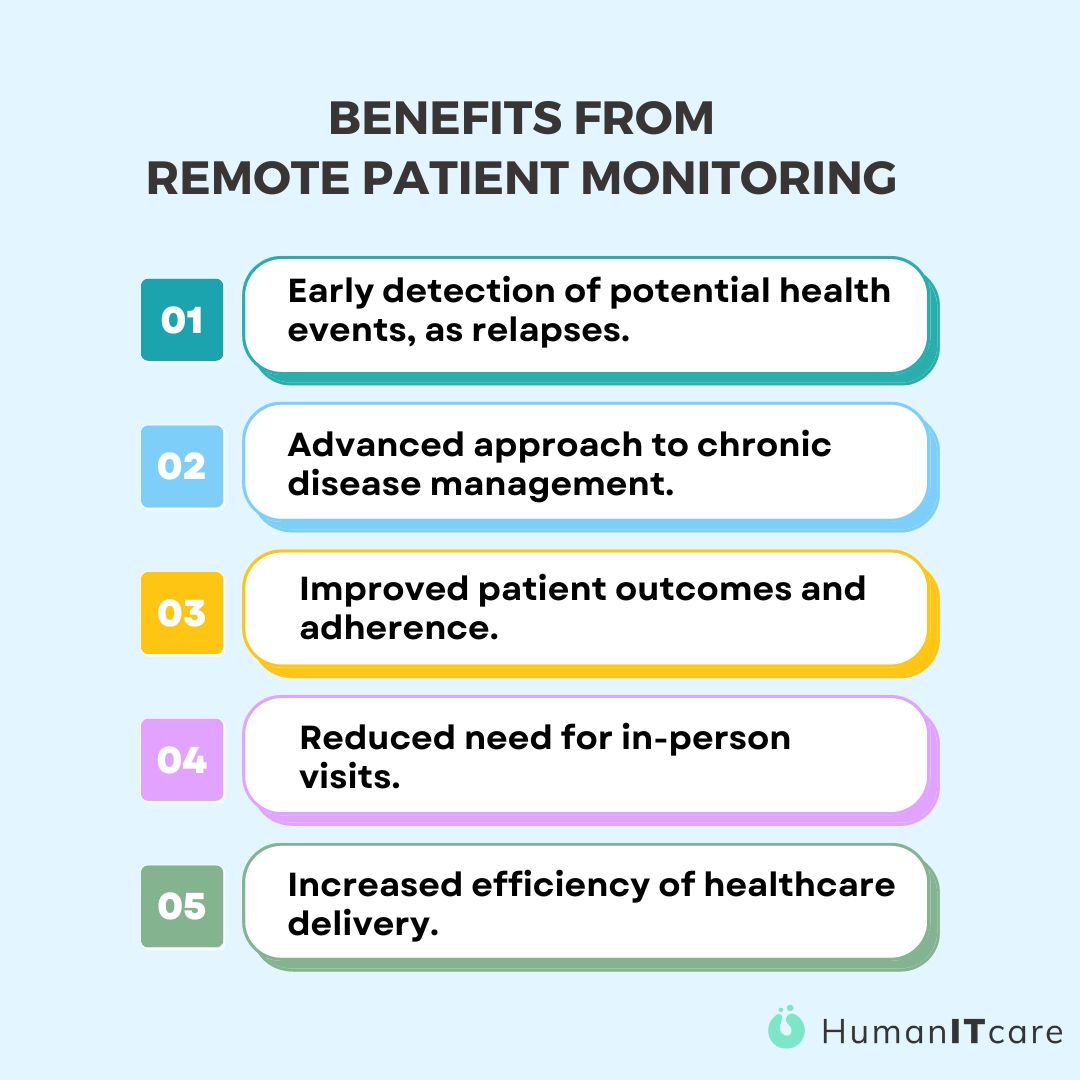Telemedicine’s growth has been one of the biggest changes in recent years as the world of healthcare is evolving at a rapid pace. It refers to the practice of using technology to provide healthcare services remotely, allowing patients to receive medical attention without leaving their homes, whenever they need it. One of the main pillars of telemedicine is remote patient monitoring, which is the practice of collecting quality patient health data from a distance. In this article, we’ll explore why remote patient monitoring is so important to telemedicine, and why it is becoming an essential tool for healthcare providers.
But how as a healthcare organization I can benefit from a remote patient monitoring?
 Benefits from using interoperable Remote Patient Monitoring
Benefits from using interoperable Remote Patient Monitoring
Remote patient monitoring is a relatively new field that has emerged thanks to advances in technology. With the rise of smartphones, wearables, and other connected devices, it is now possible to collect and transmit a wealth of health data remotely. This data can include everything from vital signs like blood pressure and heart rate to more complex metrics like sleep quality, physical activity, and blood glucose levels, as we have been doing with big healthcare providers or insurances, read here some examples.. By collecting this data from patients in their own homes, healthcare providers can gain a more comprehensive view of their patients’ health and well-being.
One of the biggest benefits of remote patient monitoring is that it allows healthcare providers to detect potential health problems early, before they become serious. For example, if a patient’s blood pressure starts to rise, their provider can intervene before it becomes dangerously high. By catching these issues early, providers can often prevent hospitalizations and other costly medical interventions. Remote patient monitoring is also particularly useful for patients with chronic conditions, as it allows their providers to monitor their health more closely and make adjustments to their treatment plans as needed. At humanITcare we have demonstrated that interoperable Remote Patient Monitoring solutions, are helping healthcare professionals to increase adherence (up to 90%) and deliver better outcomes, see results here.
Another advantage of remote patient monitoring is that it can improve patient outcomes by providing more personalized care. By collecting data on a patient’s daily activities, healthcare providers can better understand their unique needs and preferences, and tailor their treatment plans accordingly, as we do in humanITcare.
Finally, remote patient monitoring can also improve the overall efficiency of healthcare delivery. By collecting data remotely, providers can reduce the need for in-person visits, which can be time-consuming and expensive for patients. This is particularly important in rural or underserved areas, where access to healthcare can be limited.
So, remote patient monitoring is a critical component of telemedicine, providing healthcare providers with a wealth of valuable data that can help them deliver more personalized and efficient care, as we have show in our growth as a company . As technology continues to evolve, we can expect to see even more innovations in remote patient monitoring, with new devices and platforms that make it easier than ever to collect and transmit health data from a distance.
